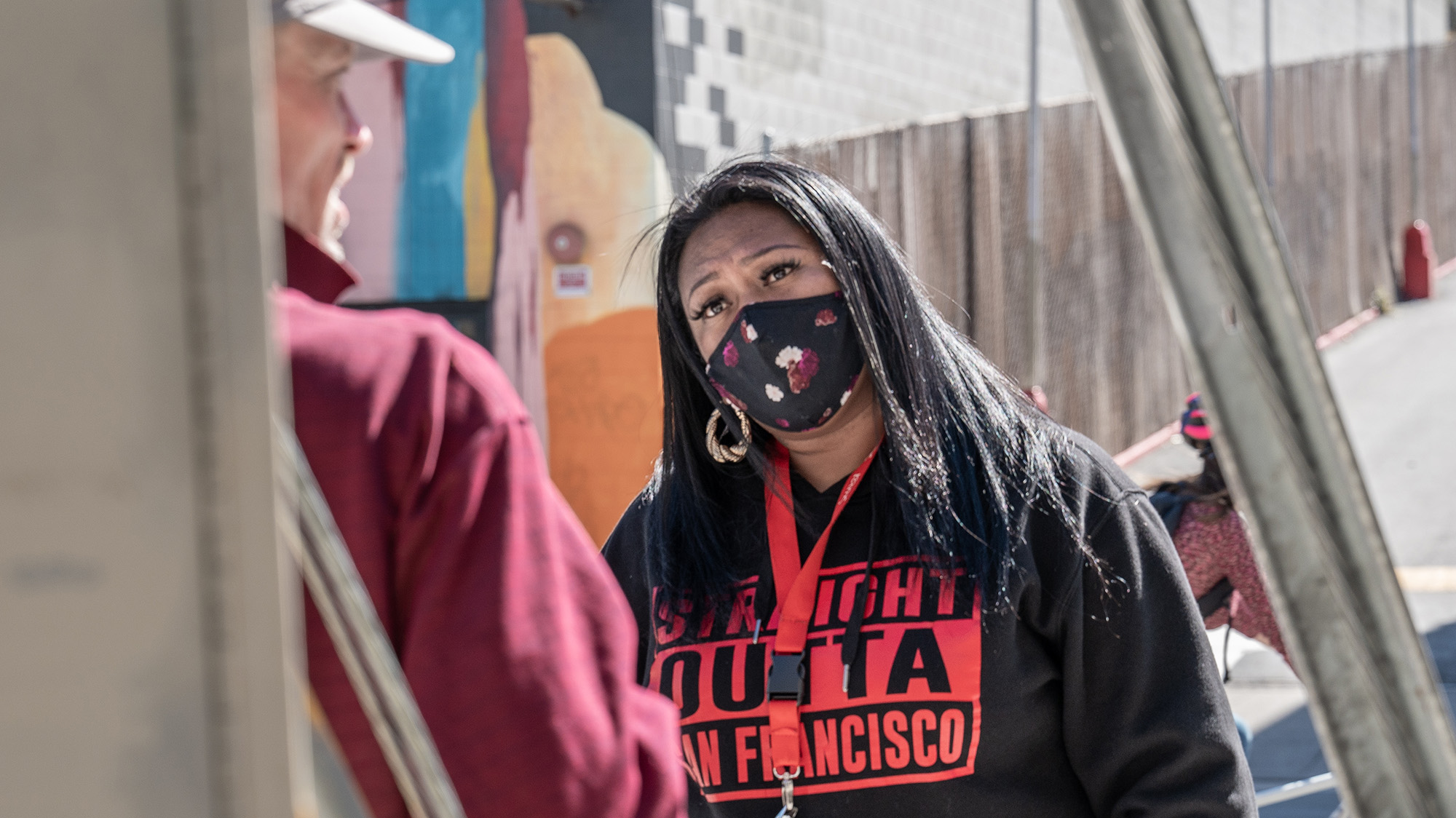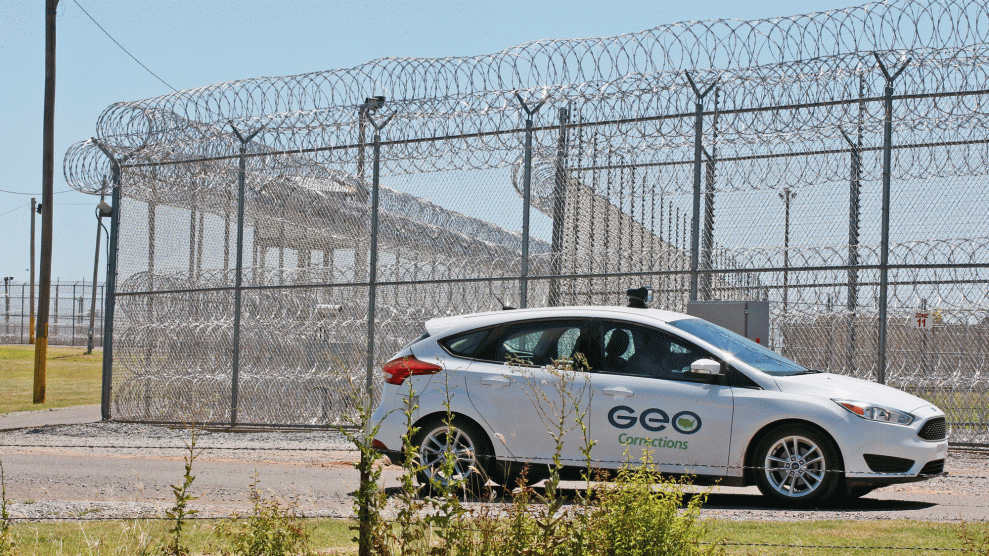Roy Sapp had just gotten to work at the Rock Bar in San Francisco’s Bernal Heights neighborhood when he heard a man shouting outside. It was a Tuesday afternoon in October, and the man, middle-aged and thin with stained gray sweatpants, flailed his arms as he ranted at no one in particular. Sapp wondered if the guy was experiencing a mental health crisis or if he was high: A crack pipe and a meth pipe lay on the ground where he’d been standing. Suddenly, the man threw himself onto an SUV that was driving slowly down the block. “Get out of here, kids!” he yelled after scrambling back onto his feet, blocking traffic. “I’m not gonna hurt anyone!”
Sapp, then 60, looked on in concern. Born just down the street, he had lived in the neighborhood his entire life. Until recently, he had spent decades addicted to drugs, and now he was missing some teeth and one of his eyes. One year sober, he wished he could help the man raving outside, but he didn’t want to dial 911. “I always see people like him and don’t call,” he told me later, as we stood outside the bar. “I don’t want to call the cops on somebody and have them locked up. That’s normally what happens.”
Sapp hadn’t realized that if he had made the call, it wouldn’t necessarily have been the police who would have shown up. After the George Floyd protests shook the country in 2020, San Francisco started redirecting these sorts of 911 calls to paramedics and trained behavioral health workers. The city’s new Street Crisis Response Team, which responds to unarmed adults in crisis from mental illness, substance use, or homelessness, tries to reduce interactions between the public and the police, to prevent officers from reacting violently to people in these situations.
Nationwide, cops fatally shoot hundreds of people experiencing mental health emergencies every year. The city’s crisis responders, by contrast, don’t carry weapons. And they don’t have law enforcement backgrounds: Each three-person team includes a Fire Department paramedic, a behavioral health specialist, and a peer support counselor to help connect people with social services. In their vans, they store supplies like blankets, socks, snacks, Narcan, tampons, and toothbrushes. They respond to calls within 16 minutes on average, sometimes spending hours with a single person. Since November 2020, the team has fielded thousands of incidents—and, according to the Department of Public Health, which manages the project, not one has led to a death or an arrest, and fewer than 1 percent have led to violence.

Peer support counselor Horepa Tautolo (left) and behavioral health clinician Karey Fenderson prepare clothing and other essentials to offer to folks they encounter during their shift on the Street Crisis Response Team.
Amy Osborne
San Francisco isn’t the only place betting that a health-focused crisis response team is the key to reducing unnecessary violence on its streets: Dozens of cities around the country, including Los Angeles, New York, and Denver, have set up similar teams over the last couple of years. Many draw inspiration from a long-running program in Eugene, Oregon, called Crisis Assistance Helping Out on the Streets (CAHOOTS). Since its start in 1989, CAHOOTS has saved Eugene millions of dollars, according to the clinic that created the program, by freeing up police to focus on more dangerous crimes and by keeping mentally ill people out of jail.
Yet “CAHOOTS isn’t some cookie-cutter [program] that you can just pick up from Eugene and just kind of plunk down” in other cities, Tim Black, who formerly led the program, told US News & World Report in 2020. “Every community is different, every community has unique needs.” That’s true in San Francisco, which is reeling from the opioid epidemic and has a relatively huge homeless population, with an estimated 8,000-plus people, or about 1 in 100 residents, lacking permanent housing.
And as it tries to scale up its Street Crisis Response Team, the city is confronting a central tension: Residents request the crisis responders by calling 911—a tactic that may have worked in the whiter Oregon town but appears to be alienating some of the Black and brown communities San Francisco seeks to serve.
“Especially this day and age with all the violence by law enforcement toward men of color, you’re worried that if you call 911, it might be the police who show up,” says Hillary Ronen, a district supervisor who represents Bernal Heights. “If we had somebody we could call instead of 911, that would be better,” adds Gwendolyn Westbrook, who leads Mother Brown’s kitchen for unhoused people in the Bayview neighborhood, which has the city’s highest proportion of Black residents. As Tim Black told the nonprofit Vera Institute of Justice in 2020, “There’s a lot of privilege that comes along with having a healthy enough relationship with police that you can contact them.”
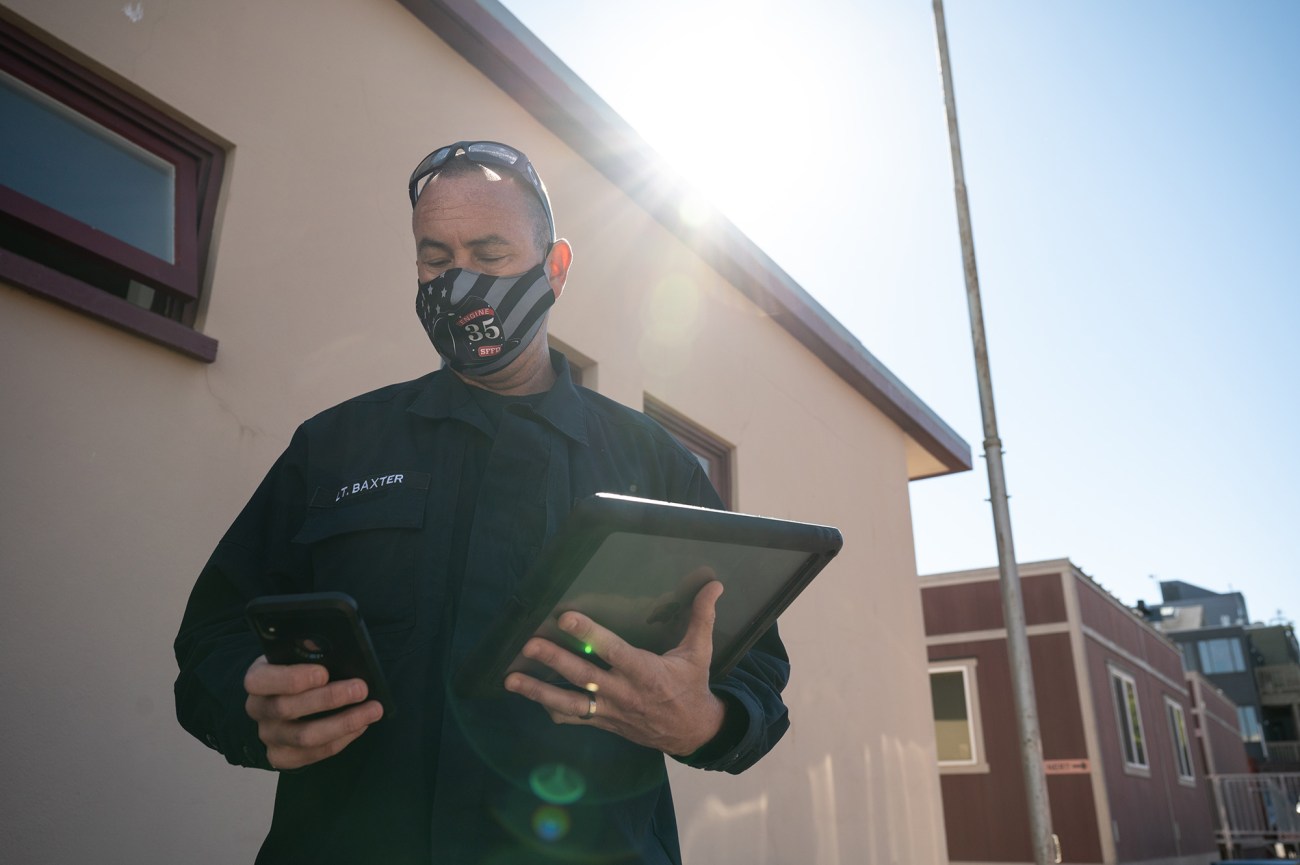
Lieutenant Jonathan Baxter of the San Francisco Fire Department works with the Street Crisis Response Team.
Amy Osborne
So as San Francisco and other governments experiment with alternatives to the police, they face a dilemma: It’s a challenge to convince enough people to trust the replacements if those replacements are dispatched by 911 and managed by government institutions that have a history of underserving people of color. Some reformers think a model that forgoes the police system altogether would be a better approach. “Large swaths of Black and brown people will never call the police, no matter what crisis is in front of us,” says Cat Brooks, an activist in nearby Oakland who co-founded the Anti Police-Terror Project, a grassroots group that recently launched its own crisis response team that doesn’t partner with law enforcement or use 911. “Because we’re clear they very rarely make things better, and in fact they far more often escalate things, resulting in abuse, incarceration, and in the worst case death.”
Under San Francisco’s current model, when someone calls 911 to request help for a situation that could warrant the crisis responders, there’s always a chance the dispatcher will send police instead, particularly if no paramedics or behavioral health clinicians are available. And the paramedics themselves, once they arrive at a scene, can ask for police assistance if the person in crisis appears violent or armed.
That doesn’t happen often, but it almost did outside the Rock Bar, as Roy Sapp watched the houseless man, who I’ll call Tom, yelling in the street. Someone in the neighborhood called 911, and a red van with the crisis responders arrived just as Tom jumped at the SUV. As I sat observing the scene from a car nearby, one of the responders, Mary Meraw, a paramedic from the Fire Department, lifted her radio and considered requesting police backup, worried he might hurt himself. But then she hesitated, not wanting to involve cops who might escalate things. Maybe, she hoped, her colleagues could calm him down on their own.
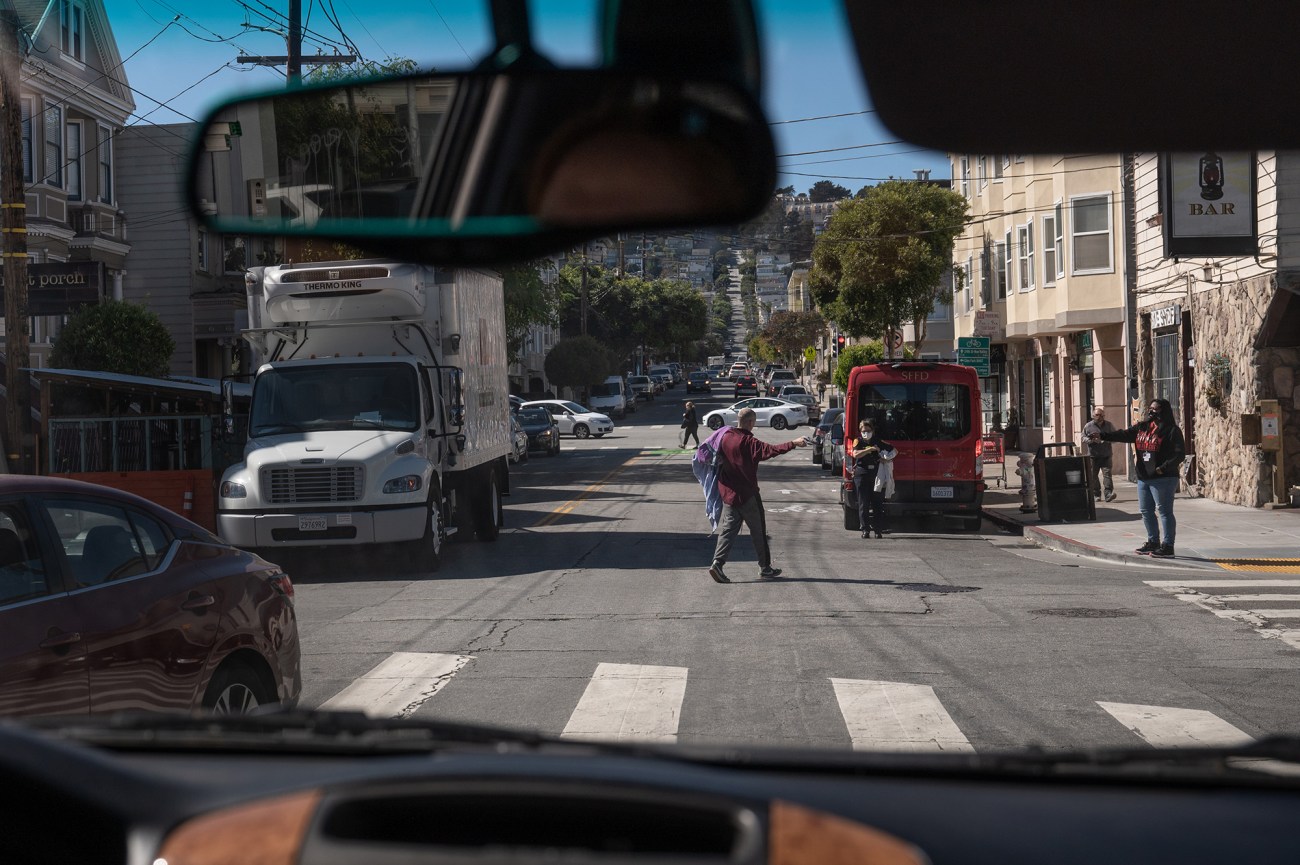
The Street Crisis Response Team approaches a man in the street yelling at passing cars. The team received a call through 911 dispatchers, a call that police would have been dispatched to in the past.
Amy Osborne
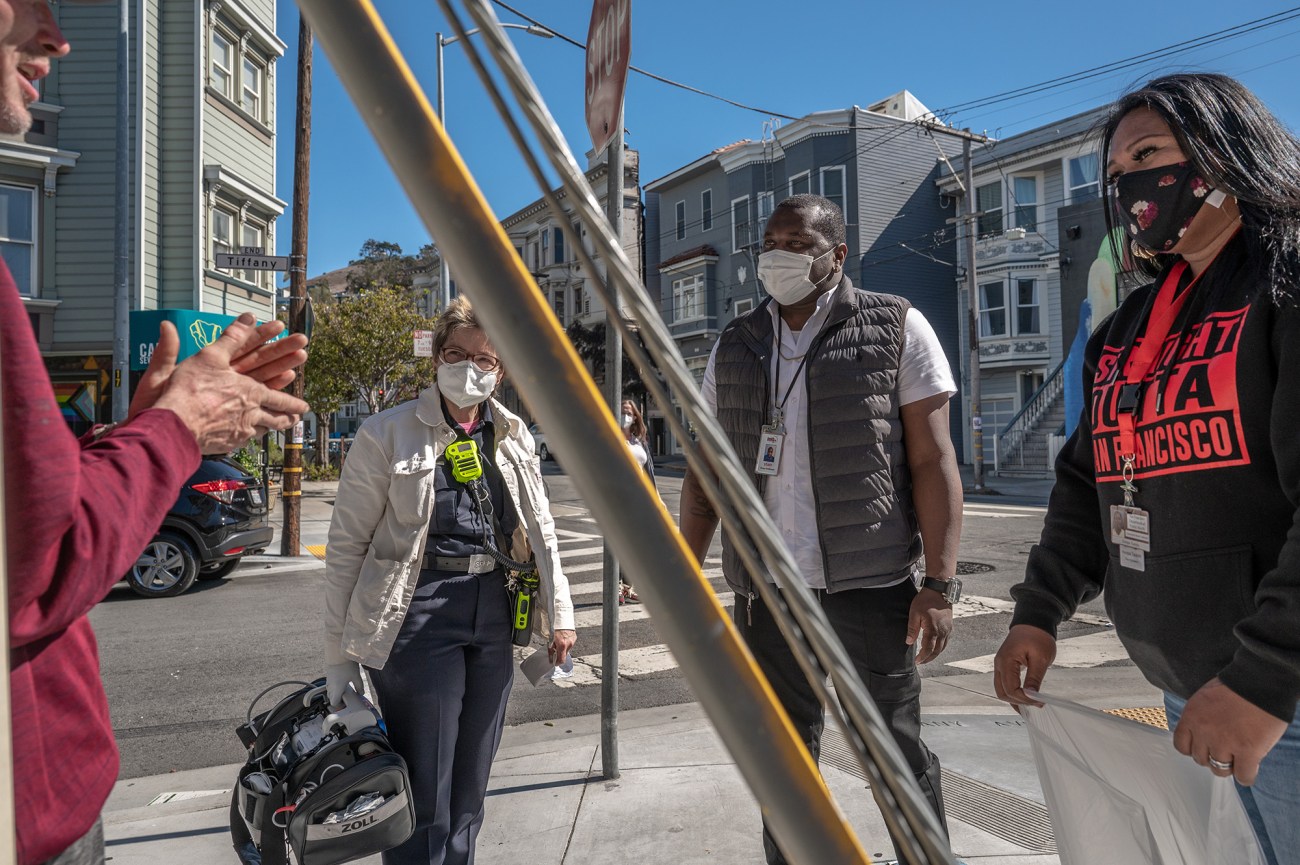
After calming down the man who was yelling at passing cars (referred to as “Tom” in the story), the crisis responders, including (from left) paramedic Mary Meraw, Karey Fenderson, and Horepa Tautolo, continue to talk with him before offering him food, water, and medical attention.
Amy Osborne
So she let them work. Behavioral health clinician Karey Fenderson made eye contact with Tom and gently motioned him toward the sidewalk, where peer support counselor Horepa Tautolo handed him a water bottle and a snack. Within half a minute, Tom had relaxed. Fenderson and Tautolo, dressed in civilian clothes, stayed with him, holding his belongings while he bent down to tie his shoes. “Then he started engaging with us,” Fenderson recalls. “It just looked like he wanted to get a lot off his chest.”
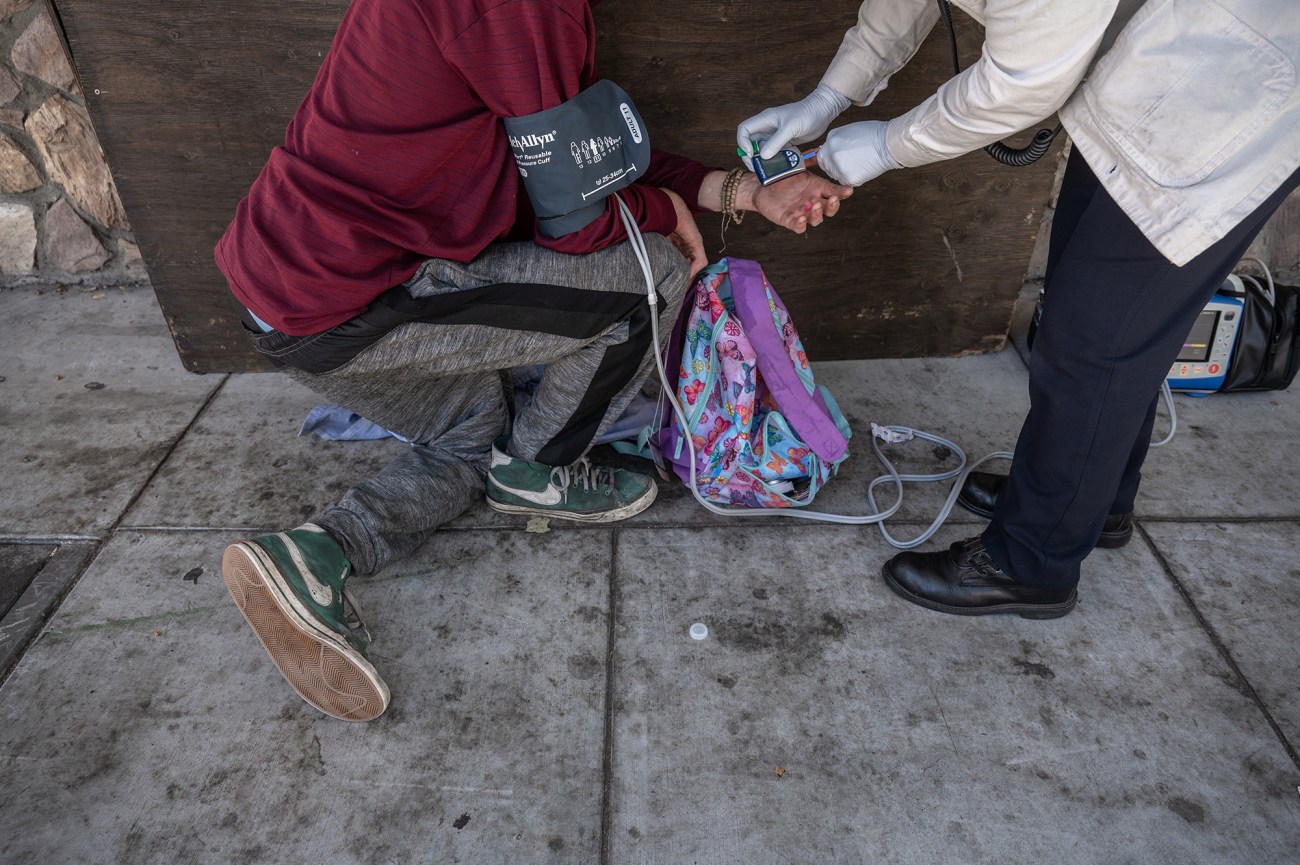
Tom has his vital signs taken after being talked out of the middle of the street and stabilized by the Street Crisis Response Team.
Amy Osborne
Oregon’s most famous crisis response team emerged from an unlikely pairing of the police and hippies during the tough-on-crime wave of the late 1980s. The hippies worked for the White Bird Clinic, a community health center in Eugene that they’d created in the late ’60s. They had deep connections to the counterculture movement, fundraising at Grateful Dead concerts where their volunteer medics offered treatment to Deadheads on bad trips. They’d long distrusted law enforcement officers, who they believed heightened people’s anxiety rather than calming them down.
So in 1989, members of the White Bird Clinic hatched a plan: Maybe the easiest way for the hippies to protect people from the police would be, counterintuitively, to work with the police. Or at least with police dispatchers. “There were a lot of people who needed the kind of response that police didn’t seem able to provide or didn’t have the training to provide. We started working with the city to figure out a way to have another option available,” says Arlo Silver, the current program coordinator for CAHOOTS. The clinic retrofitted an old van, recruited more medics, and offered to send them instead of the cops to certain 911 calls, like those involving addiction crises, psychotic episodes, and suicidal threats. The name of the strategy, Crisis Assistance Helping Out on the Streets, or CAHOOTS, is a playful nod to the clinic’s discomfort with collaborating with the Eugene Police Department, which they could call for backup if the situation turned violent.
The results were overwhelmingly positive. Because the White Bird Clinic had spent decades building trust with the community and employed people with their own lived experience of drug abuse and other issues, it could handle emergencies with more empathy than law enforcement. By 2019, the medics were responding to 24,000 calls a year, and they said only about 150 required police backup. By handling incidents that cops would otherwise address, the crisis responders have saved the police department between $200,000 and $1.2 million a year, according to estimates from the clinic and the police department. It’s “providing a valuable and needed resource to the community,” a police department spokesperson says.
But it wasn’t until the murder of George Floyd that cities around the country, searching for alternatives to traditional policing, latched onto CAHOOTS. The medics in Eugene became so popular that they developed a formal training course for municipal governments and community groups that wanted to create their own version. Soon, similar programs launched from California to Montana to Colorado to Texas.
San Francisco officials had their eyes on Eugene’s model even before 2020, as a way to respond to the city’s homelessness crisis. As rents continued upward during the past couple of decades and a fentanyl crisis gripped the city, the number of unhoused people swelled to at least 8,000. Tents and bodies in sleeping bags dotted the sidewalks in many neighborhoods, along with needles and excrement. It was so bad that, in 2018, a UN official described the city’s treatment of homeless people as “cruel.”
The next year, as the bleak conditions saw no signs of improvement, medical workers, caregivers, and politicians in San Francisco staged a protest at City Hall and threatened to take it over, leading to two arrests. Weeks later, San Francisco lawmakers unanimously passed Mental Health SF, a law to overhaul the city’s mental health infrastructure. In addition to increasing shelter beds and residential treatment programs and creating a 24-hour mental health services center, it called for a CAHOOTS-style Street Crisis Response Team.
The first team launched in November 2020 in the Tenderloin, a neighborhood known for drug dealing and fatal overdoses and home to the city’s biggest homeless population. Since then, six more teams have launched in other neighborhoods. The police still handle any 911 call involving violence or a weapon. But they offload many of the calls for unarmed adults dealing with a psychotic episode or an addiction-related emergency in a public setting. The majority of people now served by the crisis responders are unhoused. “We can respond to calls of people in crisis with compassion,” San Francisco Mayor London Breed said a year after the first team launched.
“We’ve had an overreliance on policing for decades, so it’s really good to see responses that are not as reactionary, that actually address the issues and build partnership between community and our systems that are responding to public safety,” Tinisch Hollins, a native San Franciscan who leads the criminal justice reform group Californians for Safety and Justice, tells me. “More listening and more partnership are going to lead us to where we need to be.”
Encouraged by the successful start in the Tenderloin, San Francisco expanded its program by creating an Office of Coordinated Care that follows up with people after they’ve cooled off to link them with treatment and other services. The city also launched separate mobile teams to respond to drug overdoses and conduct wellness checks (in addition to preexisting teams that handle homeless outreach). Local lawmakers loosened their purse strings: During a contentious budget process in 2021, San Francisco supervisors voted to spend $22.8 million on the new mobile teams over two years, while boosting the police’s $668 million budget by millions of dollars less than the mayor proposed. Meanwhile, Congress offered more Medicaid dollars to cities that created crisis response teams like San Francisco’s. But as pandemic-fueled gun violence rose nationwide, even as overall crime dropped, the momentum for street crisis teams has flagged.
San Francisco has seen fewer shootings than many other places. Its homicide rate remained among the lowest for major US cities in 2020. And local police found that assaults, robberies, and rapes decreased during the pandemic. But as viral videos spread online of sprawling homeless encampments, smash-and-grab robberies, and open-air drug use in neighborhoods like the Tenderloin, San Francisco’s leaders came under intense scrutiny, with conservatives painting the city as a failed experiment in progressive policymaking. “It’s turned into Escape From New York, Gotham City–level chaos here,” Jason Calacanis, a former tech journalist and angel investor for Robinhood and Uber, said in 2021 on a podcast he co-hosts. He and some other venture capitalists threw their support behind a massive effort to recall the city’s progressive district attorney, Chesa Boudin, who has tried to divert low-level offenders from jails and prisons and direct them toward mental health and substance abuse treatment.
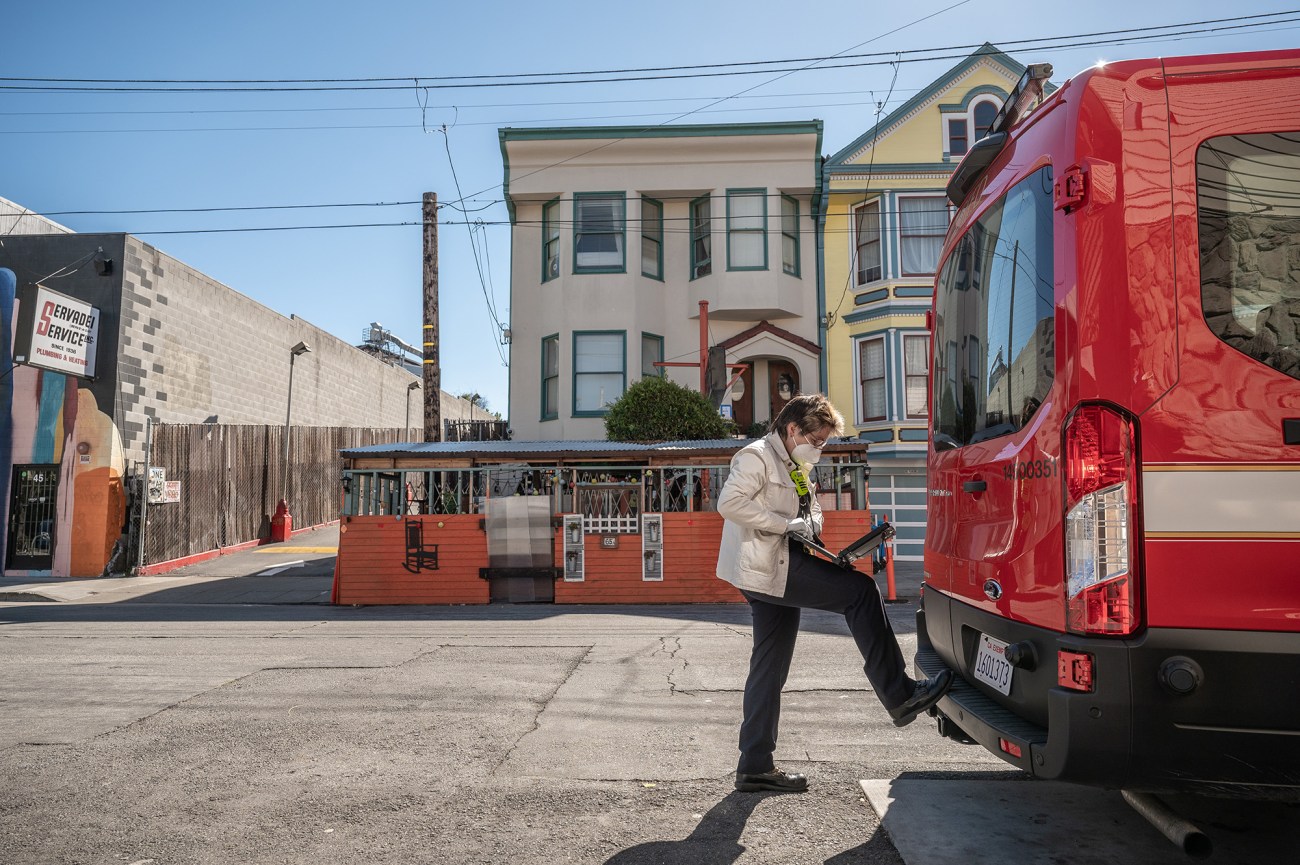
Paramedic Mary Meraw enters information into the database after she and the team successfully helped a man in crisis.
Amy Osborne
As more Democrats in power called for additional law enforcement to deal with crime, pressure mounted for San Francisco’s small fleet of health-focused crisis responders, still new to their jobs, to prove themselves. “There’s very little room for error,” says Hollins of the reform group Californians for Safety and Justice, noting that the crisis responders have to compete against the prevailing fears about lawlessness. “A lot of it is just pushing back on the narrative that policing right now is where we need to be investing our money.” As they continue to work, the responders must convince lawmakers controlling their funding that they can get results. And for that, they must convince neighbors in the community to call for their services.
Horepa “Repa” Tautolo, who is in her early 30s, grew up in the Bayview and joined the crisis responders in 2021. On the October day I shadowed her, she wore hoop earrings, ripped jeans, and a black sweatshirt that said “Straight Outta San Francisco.” Soft-spoken, with a calm voice and gentle demeanor, she clearly has a high regard for the people she helps. “They’re very intuitive and smart; most folks we come across, they’re very talented,” she tells me.
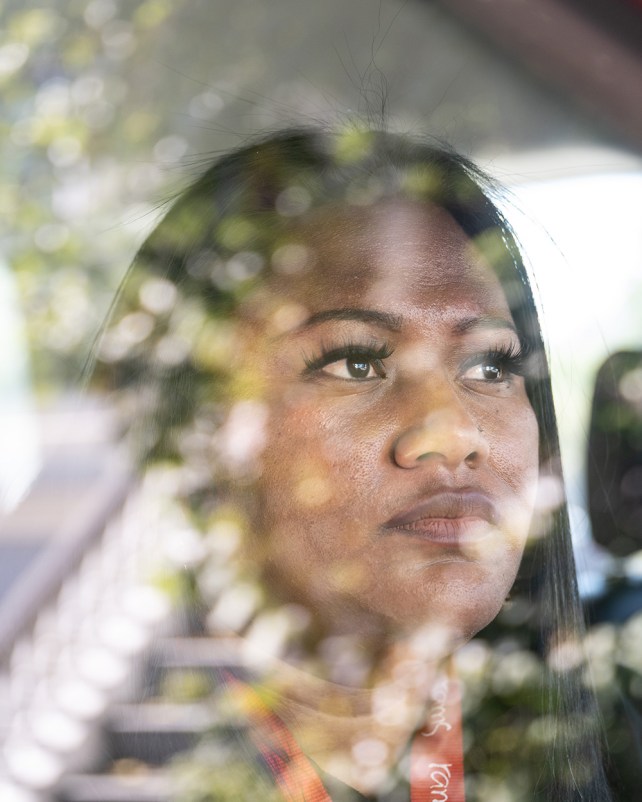
Horepa Tautolo works as a peer support counselor with San Francisco Street Crisis Response Team. Tautolo’s lived experiences offer an opening to gain trust and make connections with those in crisis and hopefully move them toward care.
Amy Osborne
To build trust, San Francisco’s crisis responders work with peer support counselors like Tautolo. The idea is to have someone with lived experience who can connect with clients on the street. “This community in particular, they catch up on a lot of, I wouldn’t say fakeness, but they pick up on non-genuinity,” Tautolo says.
This is a unique feature in San Francisco, which, unlike cities like Los Angeles and San Antonio, does not send cops out with its crisis response teams. The thinking is that counselors like Tautolo can more easily bridge the gap with neighbors who might be skeptical of a city-led effort. “The lived experience cannot be understated,” says Kathleen Silk at San Francisco’s Department of Public Health. “The peer on our team can drive a lot of interactions that might otherwise be almost impossible to navigate.”
Prior to getting the job, Tautolo spent time unhoused; she says she views her clients today like her own family. If a person is having a breakdown, she often sits beside them, giving them space until they want to talk. She’ll offer some food, from granola bars to pineapple shortbread, to help them relax. During her first day on the job, she even sang a song for a client, a woman who’d been cursing out the other health workers but seemed drawn to Tautolo. After Tautolo finished a Samoan song, the woman apologized for her outburst. “Everyone loves Repa,” says Fenderson, the behavioral health clinician on her team.
The team’s goal is not just to build trust with individuals in crisis, but with the entire community. “It’s more art than science,” says Meraw, the paramedic who rides with them. When the team began working in the Bayview, they started dropping by restaurants and local businesses to get the word out about their services and brand themselves as an alternative to the police. They reached out to aid organizations like nonprofit Mother Brown’s, which provides hot meals to low-income people. They handed out flyers in different languages, from Russian to Spanish to Cantonese.
Even if someone doesn’t want a shelter bed or drug treatment, the crisis responders try to support them in other ways. “They see that we’re not trying to push anything—we’re not trying to make them do a bunch of stuff they really don’t want to do,” says Meraw. “We’re still there to offer them snacks, a hat, socks. It builds a chance for us to maybe get a little bit further with somebody the next time we see them.”
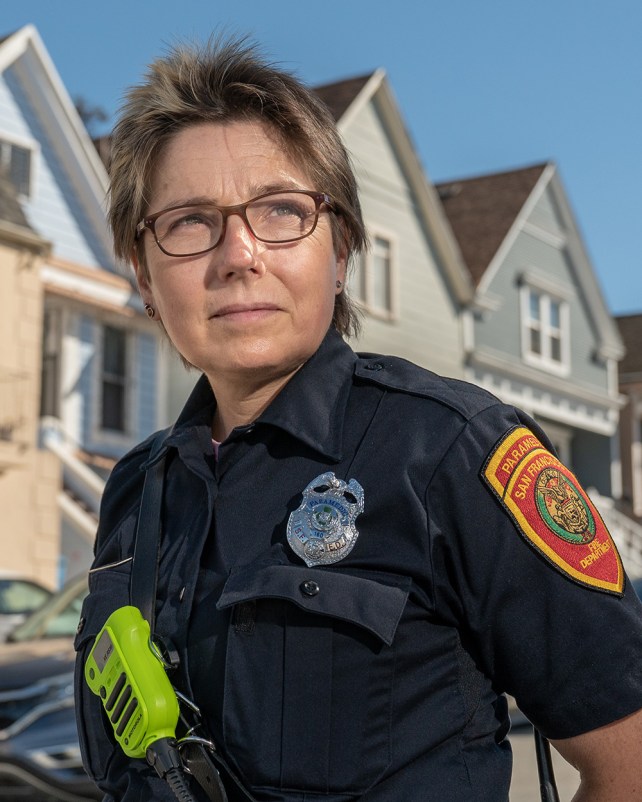
Paramedic Mary Meraw works with San Francisco Street Crisis Response Team by attending to a person’s immediate medical needs.
Amy Osborne
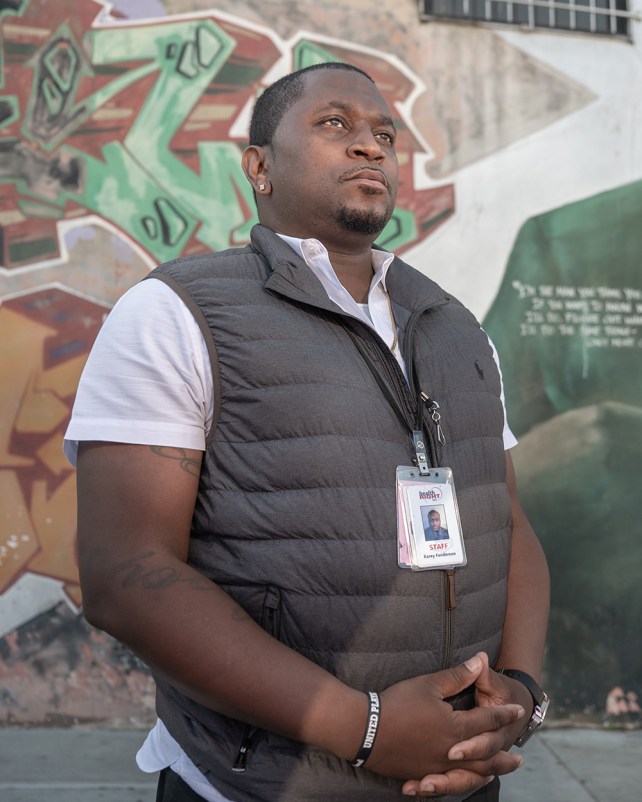
Karey Fenderson is a behavioral health clinician on the team.
Neighbors noticed and increasingly welcome the responders. “They’re from the community,” Westbrook of Mother Brown’s says of Tautolo and her team, who made a point to show up at the soup kitchen and introduce themselves to her when they were first assigned to the neighborhood.
But not everyone feels comfortable calling for their help, especially given that San Francisco continues to dispatch them through 911—a number that some residents, especially in certain neighborhoods, associate with the cops. The crisis responders receive far fewer 911 calls from the Bayview than from other San Francisco neighborhoods, even though the Bayview has the second-highest number of unsheltered people in the city and far fewer homeless services than headline-grabbing areas like the Tenderloin. On slow days when 911 calls aren’t coming in, Tautolo’s team drives around in their van, scanning for folks who might need assistance, whether they’re yelling on the sidewalk or lying unresponsive on the ground. In the Bayview, they encounter a majority of incidents this way, rather than through 911.
Other cities face similar problems convincing people to dial for help. “It’s something we all kind of struggle with,” says Carleigh Sailon, a social worker in Colorado who helps manage Denver’s health-focused crisis response team. “The mistrust is understood,” adds Nachshon Zohari, an official at Denver’s public health department who also helps manage the team.
And mistrust grows when someone does make the leap to dial for help and then the cops show up instead of paramedics. San Francisco employs just seven crisis response teams across the entire city, with only one of them working overnight. “They are not available when people really need them,” says Westbrook.
Would another emergency number help? Oregon’s CAHOOTS, which historically dispatched through 911 or the police nonemergency line, is trying to set one up. Residents are worried that “people within the police department will hear their name or address or have information they don’t want [the police] to have,” says Silver, the program coordinator. “That is a barrier. It’s something we’ve been trying to figure out a way around for a long time.” When San Francisco service providers reached out to CAHOOTS’ White Bird Clinic for advice, one clinic staffer said the team wished they had created an alternative phone number from the start. San Francisco is considering doing so but plans to keep 911 as a primary dispatch number for logistical reasons, according to the Department of Public Health.
In the future, crisis responders around the country might also be dispatched through another national phone number, 988. About two years ago, Congress passed a law to create this three-digit number for people dealing with suicidal thoughts or other mental health emergencies. It launches in July, but governments have done little to advertise it because states are still scrambling to set up call centers.
But even if San Francisco solves the problem with 911, there’s another challenge. The mobile teams, though not run by the police, are still operated by government agencies that some vulnerable populations don’t trust. Each team includes a Fire Department paramedic clad in an official uniform. “The Fire Department is seen as very institutional,” says Jennifer Friedenbach, executive director of San Francisco’s Coalition on Homelessness. In Oregon, the White Bird Clinic has recommended that crisis teams should instead be run by nonprofits that are unaffiliated with the government and have longstanding relationships with the community.
Other cities are experimenting with that idea: Across the bridge from San Francisco, activists with the Anti Police-Terror Project in Oakland recently launched a free hotline called Mental Health First that dispatches volunteer medics and mental health specialists to people dealing with psychiatric emergencies, substance use, and interpersonal violence. It’s a community-based alternative to the city government’s own model, called MACRO, and it doesn’t use 911. “The way we were gonna reduce incidents of violence and death of our community members at the hands of law enforcement was to reduce the amount of engagement law enforcement has with our communities,” says APTP co-founder Brooks. “It certainly didn’t make sense to use the number that dispatches people who were killing our people in crisis,” she adds. Her model has attracted interest across the country, but for now its volunteers only work on Friday and Saturday nights, with no city or government funding.
San Francisco, in addition to its existing programs, is considering paying for a mobile team that would similarly be run by community nonprofits, to conduct wellbeing checks for homeless people and respond to certain calls dealing with mental illness and panhandling. In the Bayview, Mother Brown’s Westbrook likes that plan. “People would trust it more,” she says. But for now the new team remains largely theoretical, still mired in city-imposed red tape.
And Mayor Breed might be more interested in other strategies. In December, after more viral videos about San Francisco’s drug use, murders, and thefts, Breed announced that she would send extra police to the Tenderloin neighborhood to crack down on lawlessness. “It’s time that the reign of criminals who are destroying our city…come(s) to an end,” she said at a news conference at City Hall, flanked by city officials. She did not mince words. “It comes to an end when we take the steps to be more aggressive with law enforcement, more aggressive with the changes in our policies, and less tolerant of all the bullshit that destroyed our city.”
It was a major shift from a mayor who one year earlier had seemed to support the nationwide calls for a less punitive, less police-driven system of safety. Under her new plan, she pledged to fund more police overtime and order officers to crack down on drug use, while encouraging social workers to provide wraparound services. Her emphasis on law enforcement could “make a lot of people uncomfortable,” she acknowledged at the City Hall news conference. “And I don’t care,” she quickly added. “At the end of the day,” she said, “the safety of the people of San Francisco is the most important thing to me, and we are past the point where what we see is even remotely acceptable.”
Friedenbach was outraged: “She’s bringing back the drug war. Moving to have more police, more arrests, more jail, and more cages is the opposite of where we need to go.”
Flooding the Tenderloin with cops could also backfire in another way. If people expect squad cars and handcuffs, they might be even less likely than before to dial 911 for help. Which is bad news for the crisis response teams, already struggling to convince community members to call for assistance. On a day I shadowed the team in the Bayview, they spent an entire morning waiting for a 911 dispatch, hours passing and no call coming in.
After Tautolo and Fenderson calmed Tom down in front of the Rock Bar, Meraw, the paramedic, invited him to move out of the sun and into the shade of the bar’s awning, where she gently asked to take his vitals. He agreed and continued to ramble quietly, jumping from topic to topic.
“I was just discussing my grandfather’s death,” he said at one point, kneeling while she examined his blood pressure and temperature. Fenderson, the behavioral health clinician, offered to help him get a new blanket. “When was the last time you had something to eat?” Meraw inquired after asking for permission to check his blood sugar. Tom mentioned the snack that Tautolo had just shared with him, and asked what might be considered a high or low blood sugar level. He said he couldn’t remember his age or his birthday.
The team hoped to connect him with a shelter or drug detox clinic. But he wasn’t interested. They made a note to follow up with him later through the Office of Coordinated Care, whose outreach workers scour the city on foot, by public transport, or with their own cars to find people after an initial interaction with crisis responders. They offer to get their laundry done for free, to buy them a warm meal or a coat for the winter. Sometimes they connect them with family members across the country, or help them sign up for housing, detox, food stamps, or California’s Medicaid. If a person declines help, they’ll return again another day, just to check in.
But with only seven OCC staffers for the whole city and so many people in need, they can struggle to find everyone on their list after a crisis. Unhoused clients don’t always stay in the same place, and many don’t have phones, so outreach workers look for them where they were last seen, identifying them based on notes about a colorful tattoo or belongings they were observed with, whether a red tent or a shopping cart or a little dog. A year after the Office of Coordinated Care began ramping up, the outreach workers had connected about one-third of people to services after their interactions with the initial crisis response teams. A small number declined assistance, and another quarter of people could not be found.
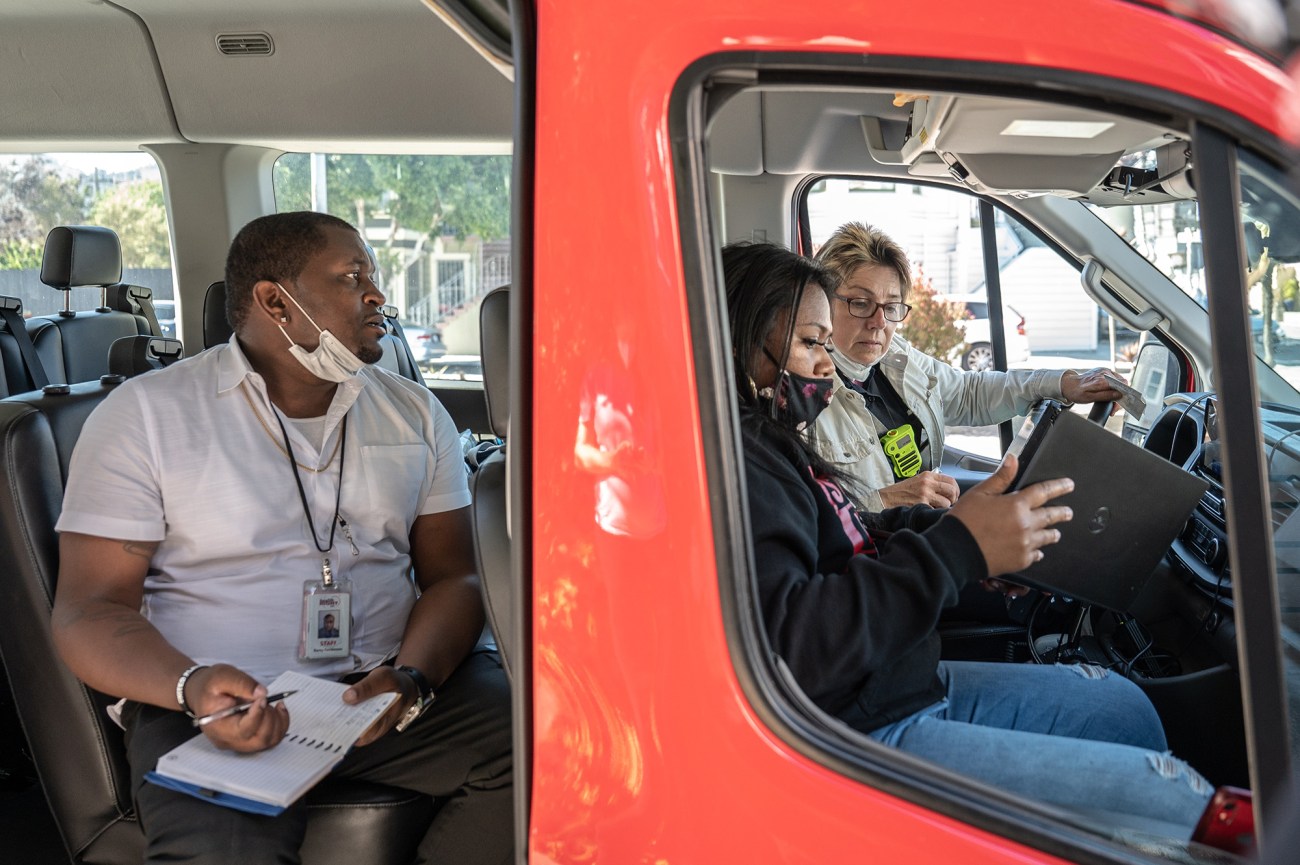
Fenderson, Meraw, and Tautolo debrief in the van to compile information about a man they just assisted and his situation on the streets.
Amy Osborne
They face a separate challenge, too: The city lacks enough homeless-shelter beds. As of 2019, San Francisco had just 3,000 beds, at least a couple thousand less than the number of unsheltered people. All together, the street crisis response teams were allocated just three to four shelter beds each day the week I shadowed them. “If there’s no program available for them to enter,” asks Supervisor Ronen, “are we really making the long-term change that will help improve people’s lives?”
Even though Tom didn’t want to go to a detox clinic, he seemed relaxed by the time he said goodbye to the crisis responders, a far cry from when they first encountered him next to the SUV. Tautolo, the peer counselor, asked whether he planned to go look for a bag that he said he’d lost. He nodded. “God bless you all,” Tom said quietly as he walked away.
Sapp, the employee at the bar, continued watching from the sidewalk. He still wasn’t sure he’d call 911 the next time someone like Tom had an episode in front of him, he told me. But if crisis teams can handle every call, Sapp said, it would make a big difference.
“Oh yeah, I’d call a lot more,” he said, standing outside the bar. In his 60 years living in the neighborhood and his decades struggling with substance abuse, he had never seen the city respond to an intoxicated man like that before. “I was amazed by it,” he said. “Yep,” he added, with the crisis responders on his mind, “you guys actually did something good.”
